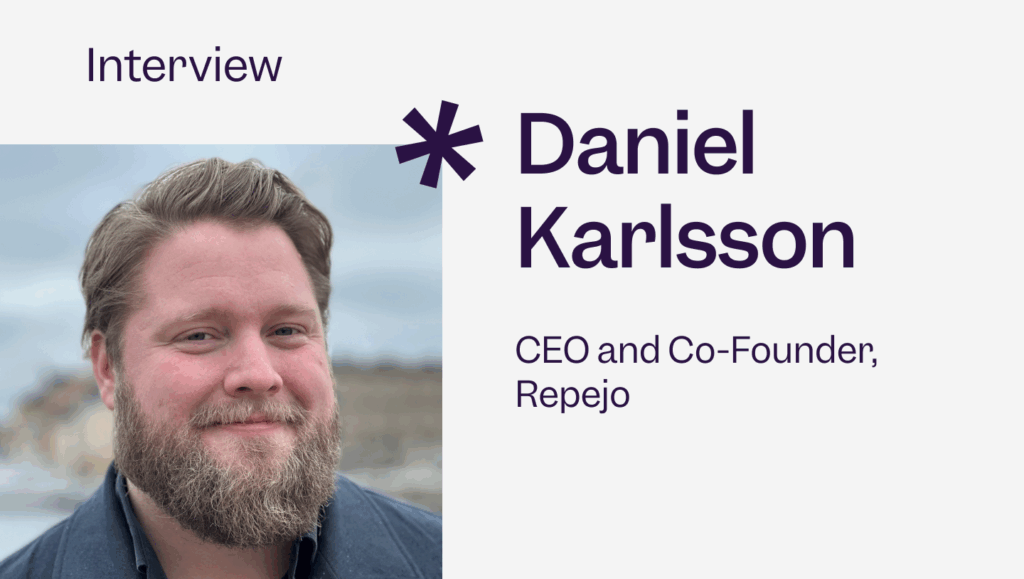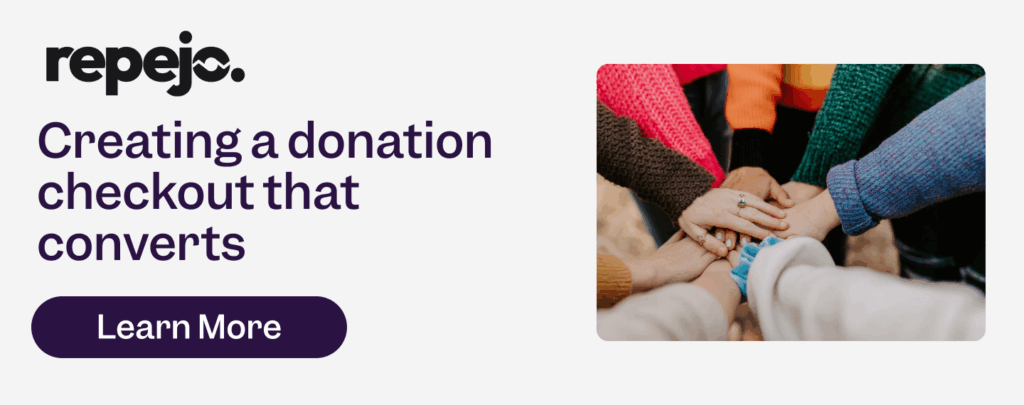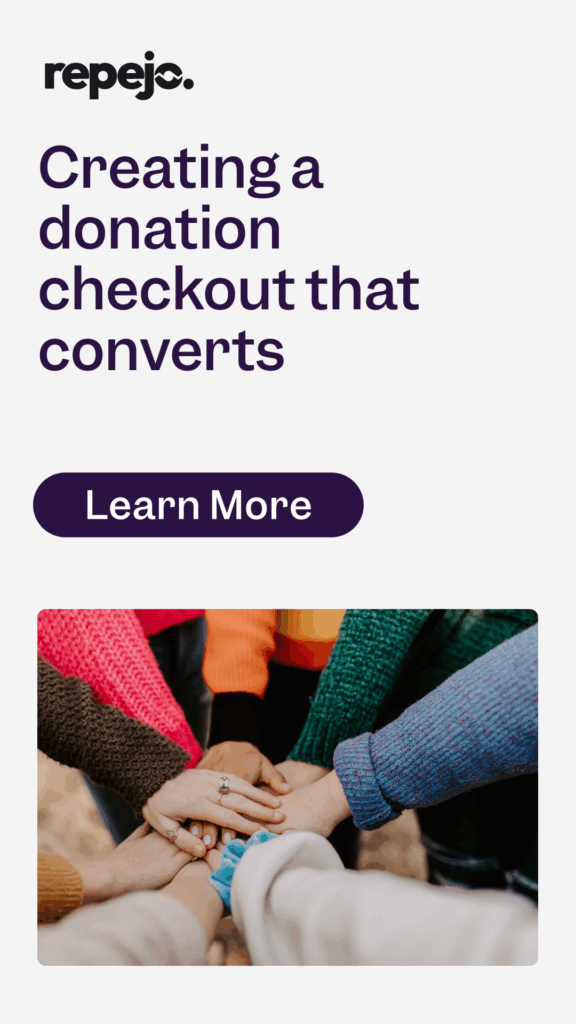
Non-profit organisations (NGOs) face a constant challenge in optimising their online fundraising efforts. Donors accustomed to the seamless checkout experiences offered by e-commerce sites expect the same smooth user journey when making charitable contributions. Unfortunately, many nonprofit checkout processes, particularly those for setting up recurring payments through methods like Sweden’s Autogiro direct debit service, have not kept pace with commercial standards. This discrepancy can consequently lead to drop-offs and low conversion rates.
To address this issue, Repejo, a payment operator dedicated to the NGO sector, is working to streamline payment methods and make the donation process as simple and smooth as e-commerce – an approach they hope will enable charities to maximise their fundraising efforts.
To explain more, Brite spoke with Daniel Karlsson, CEO and Co-Founder of Repejo, to discuss the specific challenges non-profits face in online fundraising and how his company is providing a modern, ‘donation-first’ solution. Karlsson also explains how Repejo’s new checkout process eliminates unnecessary steps and leverages partners like Brite for automated account lookups, increasing conversion rates and reducing the administrative burden on NGOs.
Can you describe what Repejo does and who your main customers are?
Daniel Karlsson, CEO and Co-Founder: Repejo is a payment operator focused on NGOs. So far, we’ve mainly concentrated on recurring donations, but we’re also moving into one-time donations. Being a payment operator means we don’t provide any payment solutions on our own; we help the NGOs orchestrate these payment methods. Repejo’s main focus has been providing a checkout for recurring donors supporting Autogiro and Swish recurring.
When we started talking to NGOs, we noticed many had a poor checkout flow for gathering recurring donations via Autogiro – donors need to provide account details for Autogiro (a Swedish direct debit service). Early, we felt that these poor checkout flows were impacting conversion, so we wanted to provide nonprofits with a much better flow for that donor journey.
What inspired the founding of Repejo?
Daniel Karlsson: I attend a church in Stockholm, and during one autumn, an administrator in my denomination approached me, knowing I’m a programmer.
They received donations via Autogiro, but what they used followed a complicated and manual administration flow. They asked me to help them develop a better solution, and at that moment I thought: “Hang on, if they have this problem, someone else probably will as well.”
So I got in contact with a few other nonprofits and other churches and discovered that quite a few of them have this problem, that they have a checkout flow that is – I don’t want to say it’s bad – but the commercial side, compared to the smooth professionalism of an e-commerce checkout flow, NGO sector checkouts have been lagging.
Indeed, the problem is that donors come with expectations. For example, thanks to using e-commerce, they bring an expectation to the NGOs’ checkout expecting the same smooth experience, and when they don’t get it, they drop off or get frustrated.
And that is not ideal, as the demands on a checkout flow for NGOs are much higher. In e-commerce, you typically get something in return: a product or a service. But when you become a donor, you really don’t get anything in return except the feeling that you’re helping out and the personal satisfaction.
Therefore, NGOs have a tougher time converting visitors to donors and would be better served by a better checkout solution.
What challenges do nonprofits face today in fundraising, especially online and recurring payments?
Daniel Karlsson: Firstly, people are so used to an e-commerce flow that it simply does not meet the same standard when they suddenly get to a nonprofit flow. And that is a big problem.
Another challenge is that when we talk about recurring donors, we talk about the stock of available donors—that’s all the donors that an organisation has. What’s more, many organisations have a problem because the mean age of this group is increasing—for some organisations, their stock of donors can be 60-70 years old.
This means organisations need to get younger people to become recurring donors. There are quite a few solutions that can solve this. One of them in our local market, Sweden, is to offer Swish recurring, Apple Pay, or Klarna as payment methods. However, one key piece of the puzzle missing is offering account information services.
Autogiro has a reputation for being old-fashioned. For example, it’s difficult to sign up. However, by offering an account information lookup service—included in our checkout—we can extend the lifetime value of recurring donors by lowering the median age in the donor stock and reducing the hurdles for people wanting to make recurring donations.
What is a donation first checkout?
Daniel Karlsson: We’ve deliberately left out and simplified the donation process. We’ve tried to cut away everything that’s unnecessary and only keep the bare minimum.
Additionally, if you create a checkout built for subscription payments, you typically get the experience right. We aim to remove hurdles, not manually collecting the billing address, etc.
Have you seen that this helps the charities and NGOs you work with?
Daniel Karlsson: Our customers do experience an increase in conversion rate. However, we work with a range of small and large customers. For example, the smaller ones may not know their conversion rate before or after picking us, so it’s mostly a gut feel for them.
We are currently doing a pilot study with a top 20 Swedish NGO, which has the capacity to measure conversion rates quantitatively – indeed, these next couple of quarters will be very telling.
However, according to one organisation for which we provide services, Apologia, 71% of new donors choose to use Brite when signing up for Autogiro instead of entering their account manually.
How does offering Brite’s Data Solutions help you provide a better service to customers?
Daniel Karlsson: Offering Brite Data Solutions is a huge selling point because many NGOs have never had an automated account lookup service. Previously, their donors had to manually input their account number; for them, it’s a huge benefit that we now provide it for their customers within our checkout flow.
From our viewpoint, having Brite integrated into our checkout has driven growth. Indeed, without Brite as part of our checkout, I’m not sure we would have closed them, or at least not as fast.
Today, I don’t know of other platforms suitable for both huge NGOs and smaller nonprofits. The beauty of Repejo’s platform is that we can cater to a wide range of different nonprofits, NGOs, and charities, and offer donors a first-class checkout experience using Brite, no matter the size.
Do you see yourself expanding across Sweden and scaling further into the Nordics?
Daniel Karlsson: Exactly. We intend to focus on our long-term offering to charities and NGOs. We will go international, focusing on fundraising instead of expanding into other sectors in Sweden, since (as we have discovered) fundraising and NGOs have such different requirements from commercial operations. Working with charities and nonprofits is a key advantage for us and those organisations.
Is that because of the specific needs of donation payments you need to cater for?
Daniel Karlsson: Yes, and also the fact that providers in commercial sectors who offer payment services will typically be more focused on the needs of other sectors and less on the needs of nonprofits. We know from talking to NGOs that they have experienced that they often come second best when it comes to customer service. Indeed, having one customer group helps us align incentives with all our customers, so they will always be our primary focus.
Why did you choose Brite as a technology partner? What were the key criteria that you were looking for?
Daniel Karlsson: The first reason was that we had such good contact with you and recommendations from others within the sector—Brite was our first pick. What’s more, when we reached out to others (indeed, some quite large and well-known brands) in the open banking market, I don’t think we ever heard back from them. Also, our Brite contact, Axel, was really attentive, and we had a good experience with him.
Early on, we also felt that Brite’s positioning was aligned with ours. Brite is also focused on a good checkout flow and providing a good user experience. Also, Brite still doesn’t feel corporate at all. You still feel more start-up-y and scrappy. From the get-go, we felt that if we were providing an innovative checkout experience, we needed to work with an innovative partner, Brite.
Moreover, from a technical standpoint, Brite’s AIS solution has been straightforward to integrate. We looked into it before reaching out, and we thought it would be really easy for us to integrate, and it was. From when we started to when we went live, it took a week, something like that. We could get started quickly, which was essential for us.
With Brite, have you also achieved the efficiency and reliability that you needed for your service?
Daniel Karlsson: I don’t have any quantitative measures, but since we did the integration, we haven’t done anything else about Brite. It’s just been chugging along.
It’s a part of our app that just works. We haven’t had to make any modifications, and you can’t underplay how important it is to have something that works and maintains itself.
What has been the impact on your customers’ fundraising?
Daniel Karlsson: We recently did a case study with one of our customers, Apologia. During the two months they used the service during the summer, they increased their donor stock by 17%. The qualitative judgment was that this was the best campaign they’ve ever run, and they got way better results than expected.
Has the administrative burden for administrative work for you and your clients also improved?
Daniel Karlsson: Reducing administrative and manual tasks using Brite is a considerable benefit. Typically, when we allow donors to input their own account numbers, it’s more common that they input the wrong number. And that means that some kind of donor-relations service person at the NGOs must contact the donor. And this can be a frustrating experience. I’ve heard stories of NGOs that lost donors because the donor is typically older, and they cannot easily look up their account number. Ensuring the account numbers are correct increases conversion and decreases administrative burden.
How is Brite helping you ensure Repejo is secure and compliant with financial regulations?
Daniel Karlsson: It wouldn’t be feasible to do these kinds of integrations with the bank. There’s no way we would be able to do the service that Brite has provided to us ourselves. One of our main benefits is that, since we’re a payment operator and not a payment processor, we have fewer compliance demands on us. Brite is helping because you take the compliance burden for account information services.
How would you describe the difference in the donation experience using your platform with Brite compared to other methods?
Daniel Karlsson: A primary benefit is that they don’t have to input their account number. And Brite is a trustworthy brand. I think having Brite at the checkout increases the trustworthiness of the process. And of course, the whole experience is smoother. There are fewer steps and fewer fields that you have to input.
The massive hurdle without Brite is that very few people know their account number off the top of their head. That’s a huge change.
Finally, Brite has a proud history of working with partners in the charity and nonprofit sectors. To learn more, check out our page on the different services we offer, or get in touch with our payment experts, and we’ll see how we can help you today.
To learn more about Repejo’s services, visit their website here. Or, if you would like to understand more about how Brite and Repejo work together, read our latest customer story.

